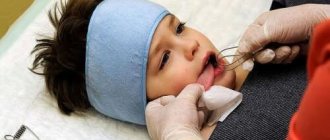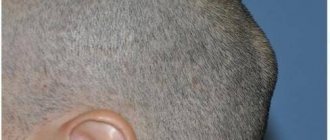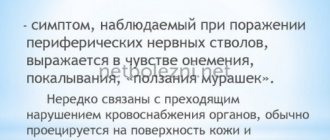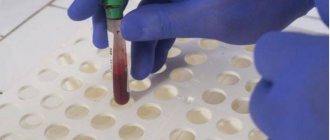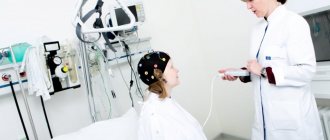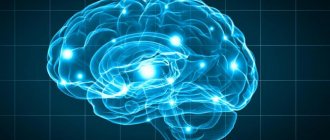What is spasticity in simple words?
In a normal state, the mechanism of muscle contraction and relaxation is brought to automaticity. All processes work flawlessly thanks to the coordinated work of the limbs, spinal cord and brain. But a stroke or injury leads to the death of cells that are responsible for transmitting signals to motor neurons in the spinal cord and brain. As a result, the inhibitory impulses do not reach the recipient - coordination is disrupted.
In other words, the muscles in the legs or arms have lost connection with the brain, but they continue to store energy. But this energy must be expended - this happens in the form of painful spasms. Since the muscles do not perceive direct commands from the brain, spasms can occur at any moment.
Skeletal muscle spasticity in neurological diseases
Skeletal muscle spasticity occurs as a result of many neurological diseases, in particular multiple sclerosis, spinal and traumatic brain injuries, cerebral palsy, and stroke.
Skeletal muscle spasticity can be caused by:
- brain damage due to lack of oxygen (hypoxia)
- meningitis - inflammation of the tissues that cover the brain
- encephalitis – inflammation of brain tissue
- phenylketonuria, etc.
All of the above diseases can lead to serious complications and consequences. Therefore, at the slightest ailment, it is imperative to seek medical help. The earlier the disease is diagnosed, the easier it is to treat.
Treatment of all neurological diseases is a complex and lengthy process. Only an experienced and highly qualified doctor can determine the true cause of the disease and prescribe correct and effective treatment.
Spasticity: good or bad?
The mechanisms of the formation of spastic syndrome are still not well understood due to their complexity and versatility. Spasticity does not affect everyone. Both its presence and its absence have their pros and cons.
Spasticity keeps muscles toned and promotes good blood supply. Many doctors are very positive about spasticity - it means that the legs or arms can still be restored and the person can walk again. Even despite the pain, many patients are happy to perceive that their legs (or arms) “work,” albeit spontaneously. At least at the first stage of rehabilitation, the role of spasticity is clearly positive. But in the future, the strengthening of spastic syndrome leads to serious difficulties in recovery.
Differences between myotomy and fibrotomy techniques
Imagine a few rubber bands, yes, exactly the ones that are most often used to fasten money into bundles. Rubber bands are elastic and can be easily stretched; after stretching, they will shrink back to their normal length. Likewise, our muscle fibers have the same properties, namely, stretch and contract. This is how a healthy muscle works: under the influence of an impulse from the nervous system, it contracts and relaxes, thereby performing this or that work in conjunction with bones and joints.
Now let's look at the situation if, under the influence of increased tone, part of the muscle fibers in the muscle died and were replaced by a connective tissue cord or scar. Let's return to our thought experiment with rubber bands. Now we place several ropes of different lengths among our elastic bands and begin to stretch the elastic bands. Will they be able to stretch completely? Of course not. They will stretch exactly to the length of the shortest rope. Exactly the same situation, from a biomechanical point of view, occurs in the muscles of a person suffering from cerebral palsy. Due to the presence of such a “rope”, movement restrictions in the joint occur. And due to the fact that bone growth in this disease (cerebral palsy) is practically not impaired, the situation with simple restriction of movements leads, as the child grows, to severe osteoarticular deformities and joint dislocations. So, the essence of the Ulzibat method is the subcutaneous dissection of muscle contracture (rope) to improve the functioning of the muscle (elastic bands) with minimal damage to healthy muscle tissue, in contrast to myotomy, in the most minimally traumatic and comfortable way for the patient.
How not to trigger spasticity?
If in the first weeks of rehabilitation you take the necessary measures against increased spasticity, you can reduce possible negative consequences. At the very least, you will be able to achieve a state where you can move comfortably and live a normal life. To do this you need:
- Reduce time spent sitting. Of course, you need to sit, including to strengthen your back muscles. You just can’t spend too much time in a sitting position - this leads to contraction and tightening (and therefore loss of elasticity) of the inguinal and abdominal muscles and tendons.
- Lie with a cushion under your chest. The patient spent some time sitting, and now he needs to lie down, placing a cushion under his chest. A regular pillow will do. This is necessary to stretch the muscles after contraction. In addition, it will be useful to place a small load on the tailbone (up to 5-8 kg, selected individually). Additionally, you can place a cushion (or pillow) just above the knee.
- Do not lie on your side with your legs bent. Essentially the same harm as sitting. If this position is comfortable for the patient, then, of course, one cannot refuse it. You need to introduce yourself a mandatory rule: every time after this you need to lie on your stomach with a pillow or cushion under your chest.
- Do not pump up the muscles at the beginning of recovery. At the start of rehabilitation, you want to do as much as possible to speed up recovery. But this approach carries serious risks. Due to spasticity, the muscles are already clogged, and training only makes the situation worse. The path of inhibitory impulses to the addressee becomes even more difficult due to severe muscle congestion.
Spasticity of the tongue
Spasticity of the tongue implies a violation of muscle tone not only of the tongue itself, but also of the face, neck, and lips. In this case, the patient’s tongue is pulled back, its back is curved and raised upward, while the tip of the tongue is not pronounced. Sometimes the tongue may be pulled forward.
An increase in the tone of the orbicularis oris muscle leads to a tight closure of the lips, or, on the contrary, the mouth may be slightly open. In the second case, increased salivation is also observed.
Doctors at the Yusupov Hospital provide medical care to patients of any severity of the disease. The hospital uses modern innovative methods of therapy to smooth out the symptoms of the pathology and, in many cases, completely relieve patients of the disease.
Treatment methods
It will not be possible to completely get rid of spastic syndrome, but you can make sure that the spasms bother you as little as possible and do not interfere with your everyday life. There are several areas of treatment:
- Therapeutic physical education (physical therapy). In fact, it is the only truly effective method of combating spasticity that gives lasting results. You need to regularly perform a set of muscle stretching exercises: stretch your toes, do circular rotations with your feet, straighten and bend your legs in a sitting position, bend your torso, lift your legs one by one, bend your knees in a position on your stomach. For exercise therapy, you can and should use various auxiliary equipment: balls, benches, hand controls, various exercise machines and other useful devices.
- Surgical procedures. There is a temporary solution that surgeons can offer - tendon trimming. For a while, the spastic syndrome actually disappears, but then it returns and becomes even stronger. Do not rush to agree to this operation until you weigh the pros and cons.
- Pills or injections. Medications can calm painful cramps. But the duration of action of drugs usually does not exceed 2-3 hours, and after prolonged use the drugs will become completely ineffective. In addition, due to medications, spastic manifestations can become stronger and more intense.
Exercise therapy and lying on your stomach with a pillow under your chest are the simplest and at the same time the most effective means against increasing spasticity. This treatment has no side effects or risks. In addition, if a person with a disability buys technical means of rehabilitation himself, then he can receive compensation from the state for their cost through social services. For more detailed information, please contact our consultants.
Staged fibrotomy using the Ulzibat method
Staged fibrotomy is performed with a special instrument - Myofibrilotome. This is a spear-shaped scalpel with a cutting edge of just a few millimeters. Thanks to special sharpening, it is possible to act only on the fibrotic area of the muscle (“rope”), while avoiding damage to healthy muscle tissue (“rubber band”). The operation is performed under general anesthesia. During the surgical stage of anesthesia, the patient is completely relaxed and his muscle tone is “turned off”: at this moment we conduct a control examination and clarify the surgical plan. Despite the patient's complete relaxation and lack of muscle tone, movement restrictions do not disappear. And muscle contractures, our “ropes,” are palpated like dense cords in the thickness of the muscle. During the operation, this stretched fiber is cut. And we immediately see how the range of motion in the joint associated with this muscle increases. This is done without an incision, through a small puncture in the skin.
The result of staged fibrotomy
Usually the operation lasts 15-20 minutes. During this time, about 12-20 myofibrotomies are performed at different levels of the patient’s body, depending on the identified problems. These can be the muscles of the upper and lower extremities, torso, and face. Since the operation is performed through a small puncture of the skin, no stitches are placed on the wound. The puncture site is covered with a sterile ball, and a pressure bandage is applied to this area to prevent hematomas. And due to the fact that the operation is performed in the muscle part, and not in the tendon part, there is no need to use immobilization, that is, plaster, splints, orthoses.
The postoperative period takes place at home and does not require constant supervision by medical personnel. As with any intervention in the body (even with a regular injection), various complications are possible with myofibrotomy. They are standard, as for any other surgical operation. These may be injuries to large vessels and nerves. However, due to the peculiarities of the technique and the high professionalism of our specialists, such complications occur extremely rarely, in less than 0.1% of cases.
We have to talk more about temporary difficulties and features in the postoperative period. Such features include subcutaneous hematomas, compactions and swelling in the area of surgery, and pain. In rare cases, the child may exhibit “uncertainty” in movements and muscle weakness in the first weeks after surgery. This is due to the need to adapt the muscle to new conditions. After all, as a result of the operation, the muscle becomes more elastic and the range of motion in the joints increases. The load on the muscles increases, the child begins to do things that he could never do before the operation. The muscle becomes more obedient, begins to more correctly execute commands from the brain, and becomes stronger. In turn, signals about more adequate muscle work go back to the brain, thereby stimulating the process of formation of new neural connections and improving the functional state of the central nervous system.
So, to summarize, step-by-step fibrotomies using the Ulzibat method are a way to eliminate fixed muscle contractures using a special scalpel in order to increase the range of motion in the joint, which leads to a significant increase in the effectiveness of the rehabilitation, preventing the development of severe osteoarticular deformities (dislocations, pathological settings) and, as a result, improving the quality of life of our patients and their parents.
Return to list
Types and types of violation
According to qualifications, three main types of spasticity can be distinguished:
- The flexor type is the increased tone of the flexor muscles when bending the limbs at the joints and lifting them.
- The extenotic type is an increase in the tone of the extensor muscles in the process of straightening the limbs in the joints.
- The adductor type includes an increase in tone when crossing in the area of the legs and closing the knees.
Pathogenesis of post-stroke spasticity
Spasticity often occurs in patients who have had a stroke. In such cases, physiotherapy is ineffective, and the presence of spasms complicates the patient’s recovery.
The muscles are constantly toned, pathological changes begin to occur in them, and joints and tendons also suffer. In addition, contractures (deformations) occur, significantly aggravating the problem.
The development of spasticity does not occur immediately; as a rule, it occurs 2-3 months after a stroke, but the first signs can be noticeable to a specialist much earlier.
The shoulders, elbows, wrists and fingers are usually affected, while the lower body is affected by the hips, knees, ankles and toes. In this case, spasticity affects the flexor muscles in the upper extremities, and the extensors in the lower extremities.
In the absence of the necessary treatment, contractures appear in the joints and bones over several years.
Pathogenesis of spasticity in multiple sclerosis
Spasticity is a concomitant phenomenon of multiple sclerosis in most cases. It manifests itself as an unexpected contraction of a muscle group, occurring spontaneously or as a reaction to an irritant.
The severity of muscle spasms in patients with multiple sclerosis can vary, ranging from mild to severe, manifesting as severe and prolonged spasms. The shape of gravity can change over time.
In multiple sclerosis, spasticity occurs in the muscles of the limbs, and in rare cases affects the back muscles.
The conclusion is simple and complex at the same time
As for the prognosis, it is individual in each case. The outcome depends on how much muscle tone is increased, the severity of the disease and other factors.
Spasticity leads to the appearance of contractures, which can significantly complicate the process of caring for the patient.
As a preventive measure, you should monitor the correct position of the patient’s head, arms and legs. For this purpose, special devices can be used, for example, splints and orthoses.
It is also recommended to change body position more often, and when performing various movements, monitor changes in muscle tone. If it worsens, you should immediately seek help from specialists.
Therapeutic foot massage for children with cerebral palsy.
Two legs of an adult with aching joints
Almost all forms of cerebral palsy affect the limbs. Most often you have to work with muscle spasticity. The legs are the most difficult area due to the massiveness of the muscles. Despite the fact that the child may be small, the leg muscles are already so strong that you have to make a lot of effort and spend a lot of time on them to achieve any lasting relaxation. Leg massage for cerebral palsy in children can be carried out according to the classical scheme, but techniques for stretching spastic muscles are required, this greatly helps to relax the muscles. You can even say that massage is a preliminary warm-up for the muscles before stretching. We start massaging with stroking techniques, but this is only the first contact, so to speak, to notify the nervous system about the beginning and nature of the procedure, then rubbing, kneading, vibration techniques. Most of all, of course, we use kneading, which we alternate with stretching muscle groups. Spasticity in the legs in most cases affects the posterior muscle groups of the thigh and lower leg, adductors, pelvic muscles, and iliopsoas. The internal muscles of the pelvis can only be affected by stretching. Therapeutic leg massage for children with cerebral palsy is done at a slow pace, deeply, with an emphasis on the calf muscles, shin flexors, with the study of similarities and places of their attachment to the bones, alternating with passive, stretching spastic muscles, movements in the hip, knee and ankle joints. I also consider it important to have a tonic massage of antagonists of spastic muscles. We carry it out deeply at a fast pace so that the muscles tense. When the muscles of the antagonists are tense, the tense muscles relax better.
Evaluation criteria
The severity of spasticity is assessed by points, the most common being the Ashworth scale. In accordance with it, the following degrees of violation are distinguished:
- 0 — muscle tone is normal;
- 1 — muscle tone is slightly increased and manifests itself in the initial stages of tension with rapid relief;
- 1a - slight increase in muscle tone, which manifests itself in a smaller part of the total number of passive movements;
- 2 — the tone is increased moderately throughout the entire passive movement, while it is carried out without difficulty;
- 3 — the tone is significantly increased, there are difficulties in the process of passive movements;
- 4 - the part of the limb affected by paresis does not bend or straighten completely.
Diagnostic measures
During the diagnostic process, the specialist first of all studies the medical history, as well as what medications the patient is taking and whether any of the patient’s close relatives suffer from neurological disorders.
Spasticity is diagnosed using tests, the essence of which is to assess limb movements and muscle activity during active and passive movements.
When examining the patient, the specialist determines whether there is resistance to the limbs during passive flexion and extension. If resistance is present, this is a sign of spasticity, and increased ease of movement may be a sign of paresis.
Goals and objectives of massage for cerebral palsy in children.
The goals of massage in the treatment of cerebral palsy in children are to reduce spasticity; prevention of the formation of contractures, prevention of stagnation of metabolic processes, extinguishing pathological reflexes, normalizing the functioning of the nervous system, as far as possible. To achieve such goals, it is necessary to solve problems to improve the mobility (elasticity) of tendons, relaxation of muscles and ligaments.
Goals such as a cure for a disease are difficult to achieve; in most cases, it is not possible to completely cure a child. Goals must be realistic, often they are long-term, so I recommend that parents save their nerves, strength and resources for long-term rehabilitation of the child. Don’t be fooled by promises to “get your child back on his feet,” those who work with such diagnoses understand perfectly well that miracles don’t happen, and someone takes advantage of the parents’ feelings and makes money from it. Achieving results in rehabilitation always requires a lot of work by specialists, the child and parents.
